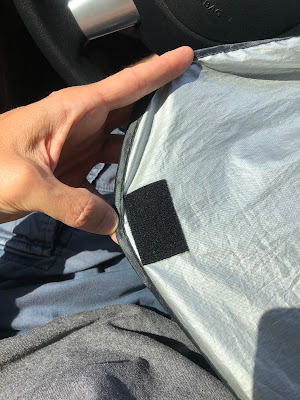Jim from San Diego improved the stability of the Revel's dinette table. Here's what he did:
Van builds may vary, but my table simply wasn’t stable enough to please me. There’s a small bracket at the bottom that’s attached very well to the van wall and floor. There’s a big bracket at the top that’s poorly attached. There were only 2 medium sized screws (.190 thread dia.) holding the top bracket to the van wall and one of mine had already pulled loose.
Next step was to remove the table assembly and watch some YouTube to find out how this thing SHOULD be attached to the van. The van metal behind the trim panels looks like the blue area below:
Van builds may vary, but my table simply wasn’t stable enough to please me. There’s a small bracket at the bottom that’s attached very well to the van wall and floor. There’s a big bracket at the top that’s poorly attached. There were only 2 medium sized screws (.190 thread dia.) holding the top bracket to the van wall and one of mine had already pulled loose.
Next step was to remove the table assembly and watch some YouTube to find out how this thing SHOULD be attached to the van. The van metal behind the trim panels looks like the blue area below:
Decided to attach the table to the side of the van using #12 sheet metal screws. These require .225 diameter thread clearance holes in the brackets and .125 dia pilot holes in the van.
Drill work required on the upper bracket:
New bracket, .125 thick aluminum folded around the back of the table assembly. Purpose of the new bracket it to pick up those 3 new van attachments AND to provide something solid for the bottom of the upper bracket (second key to solidifying the table).
This took me most of the day but “should” be a small project for anyone doing it the second time….























































